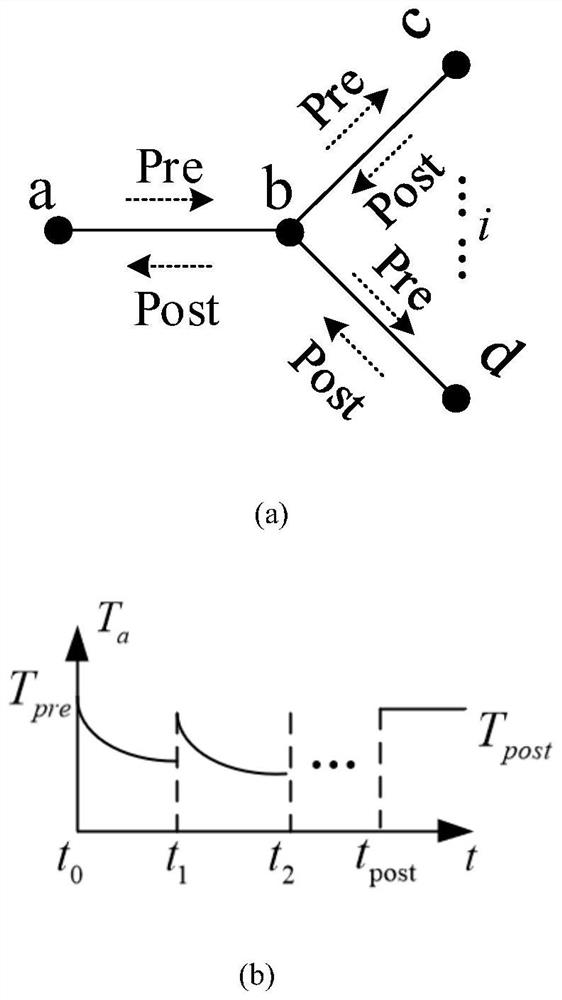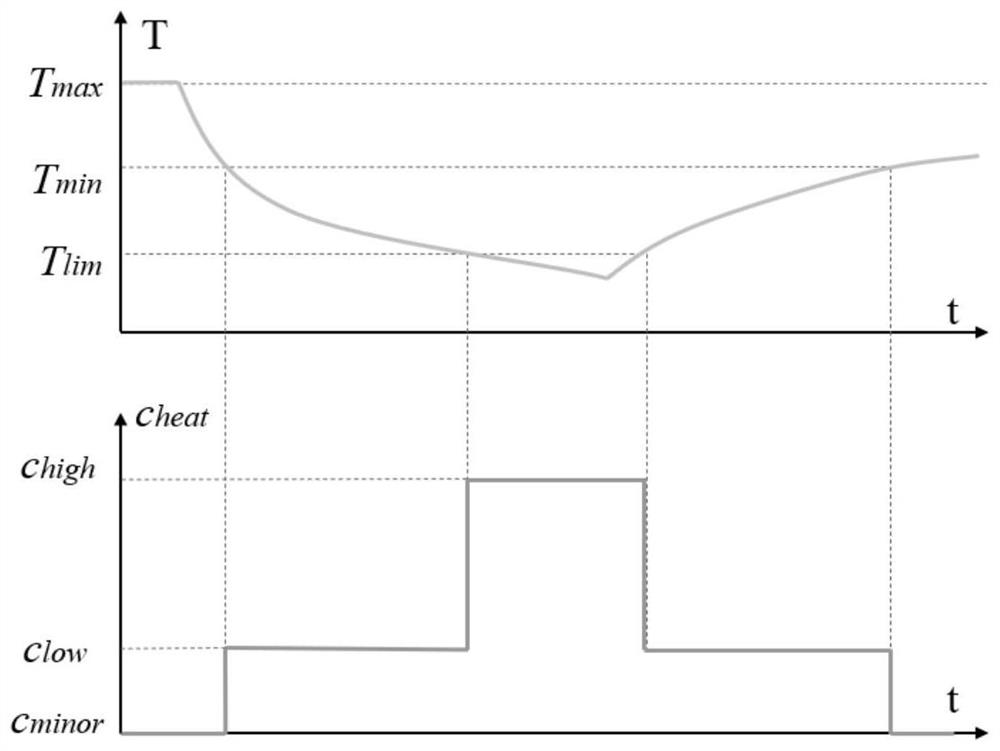Urban energy supply reliability monitoring method considering heat supply network delay and resident bearing capacity
A reliability and endurance technology, applied in computing, data processing applications, instruments, etc., can solve problems such as nonlinear changes, complex heating system behavior, and reduced reliability of energy supply system failure recovery, so as to improve comprehensiveness, Monitoring the effectiveness of system operation safety
- Summary
- Abstract
- Description
- Claims
- Application Information
AI Technical Summary
Problems solved by technology
Method used
Image
Examples
Embodiment 1
[0046] An embodiment of the present invention provides a method for monitoring the reliability of urban energy supply that takes into account heat supply delays and residents' tolerance. The method takes into account the dynamic interaction between different energy systems, buildings and residents. The method includes the following steps:
[0047] 101: Propose a quasi-steady-state model of urban energy systems considering the delay of variable flow pipes in heating systems and the thermal inertia of buildings to describe the impact of quality and quantity adjustment behaviors of heating systems on urban energy systems;
[0048] 102: A reliability index system including load loss, resident comfort and safety level is proposed to reflect the significant reduction effect of low temperature and small load loss on energy supply;
[0049] 103: The reliability monitoring based on the quasi-steady-state urban energy system model is proposed, and the corresponding relationship between p...
Embodiment 2
[0055] Below in conjunction with the specific calculation steps, the example further introduces the scheme in Embodiment 1, see the following description for details:
[0056] The embodiment of the present invention proposes a new method for monitoring the reliability of urban energy supply, which takes into account the dynamic interaction between different energy systems, buildings and residents, including: transmission delay of heating network pipes and thermal inertia of buildings .
[0057] 1. Quasi-steady-state modeling of urban energy systems
[0058] 1.1 System model
[0059] A typical urban energy system consists of electricity, gas and heating systems, and its coupling units include combined heat and power, electric boilers, etc. A typical model of an urban energy system can be described as:
[0060]
[0061] in, Represent the electric power, gas and heating system models respectively, x e ,x g ,x h represent the state variables of electricity, gas and heat...
Embodiment 3
[0113] The feasibility of the scheme of embodiment 1 and 2 of the present invention will be verified below in conjunction with specific experiments, see the following description for details:
[0114] The application scenario selects a simple urban energy system (system structure such as Figure 5 shown), verified the given model. The verification is divided into two parts, including: the impact of pipeline transmission delay and building thermal dynamics on energy services, and the impact of pipeline transmission delay and building thermal dynamics on the reliability of urban energy supply.
[0115] 1) The impact of pipeline transmission delay and building thermal dynamics on energy services
[0116] In order to highlight the influence of pipeline transmission delay and building thermal dynamics, the Figure 5 Take the No. 13-14 pipeline failure of the medium heating system as an example to study. The fault started from 1 hour, and after the fault occurred, the dispatch sy...
PUM
 Login to View More
Login to View More Abstract
Description
Claims
Application Information
 Login to View More
Login to View More - R&D
- Intellectual Property
- Life Sciences
- Materials
- Tech Scout
- Unparalleled Data Quality
- Higher Quality Content
- 60% Fewer Hallucinations
Browse by: Latest US Patents, China's latest patents, Technical Efficacy Thesaurus, Application Domain, Technology Topic, Popular Technical Reports.
© 2025 PatSnap. All rights reserved.Legal|Privacy policy|Modern Slavery Act Transparency Statement|Sitemap|About US| Contact US: help@patsnap.com



